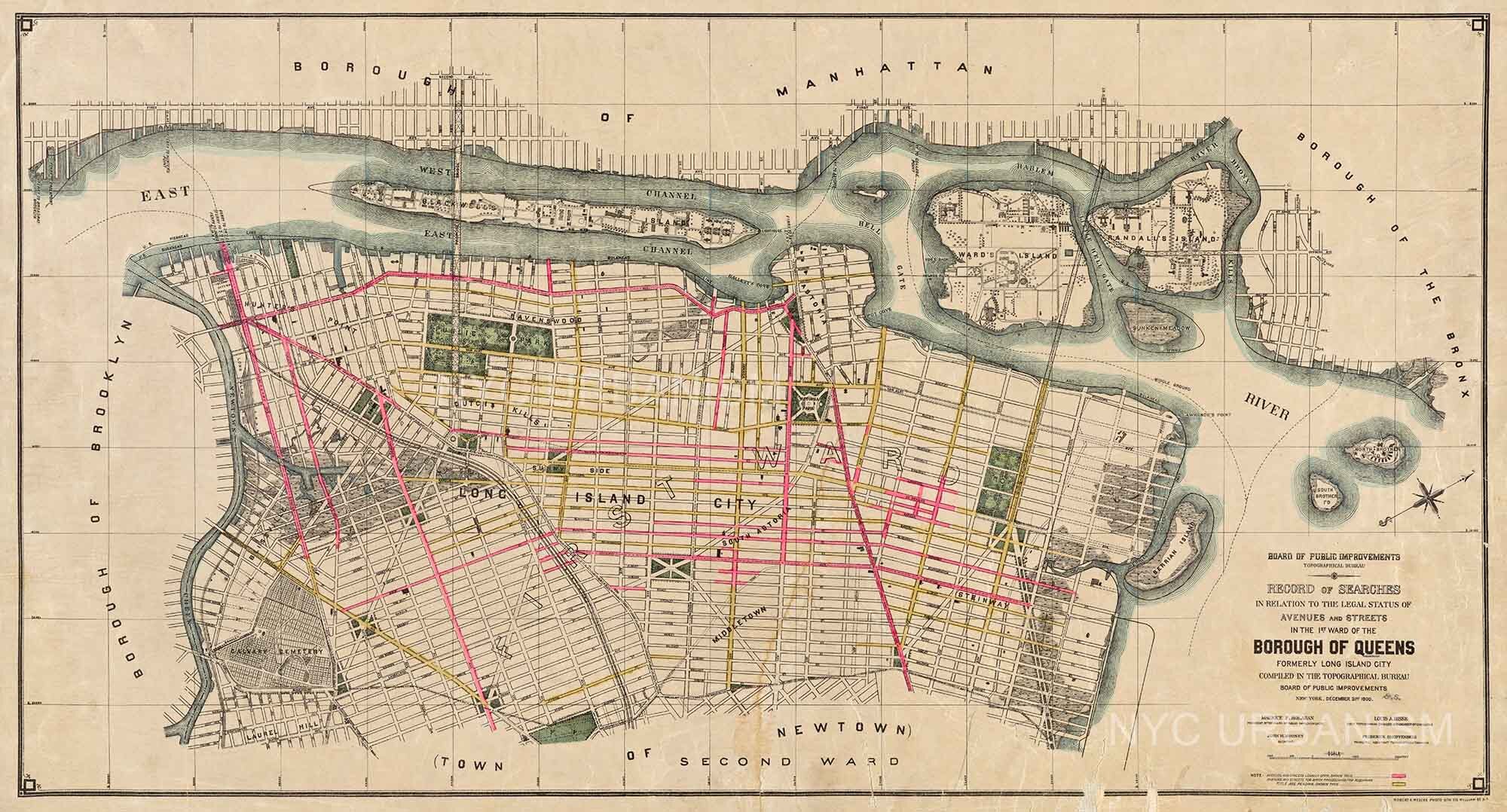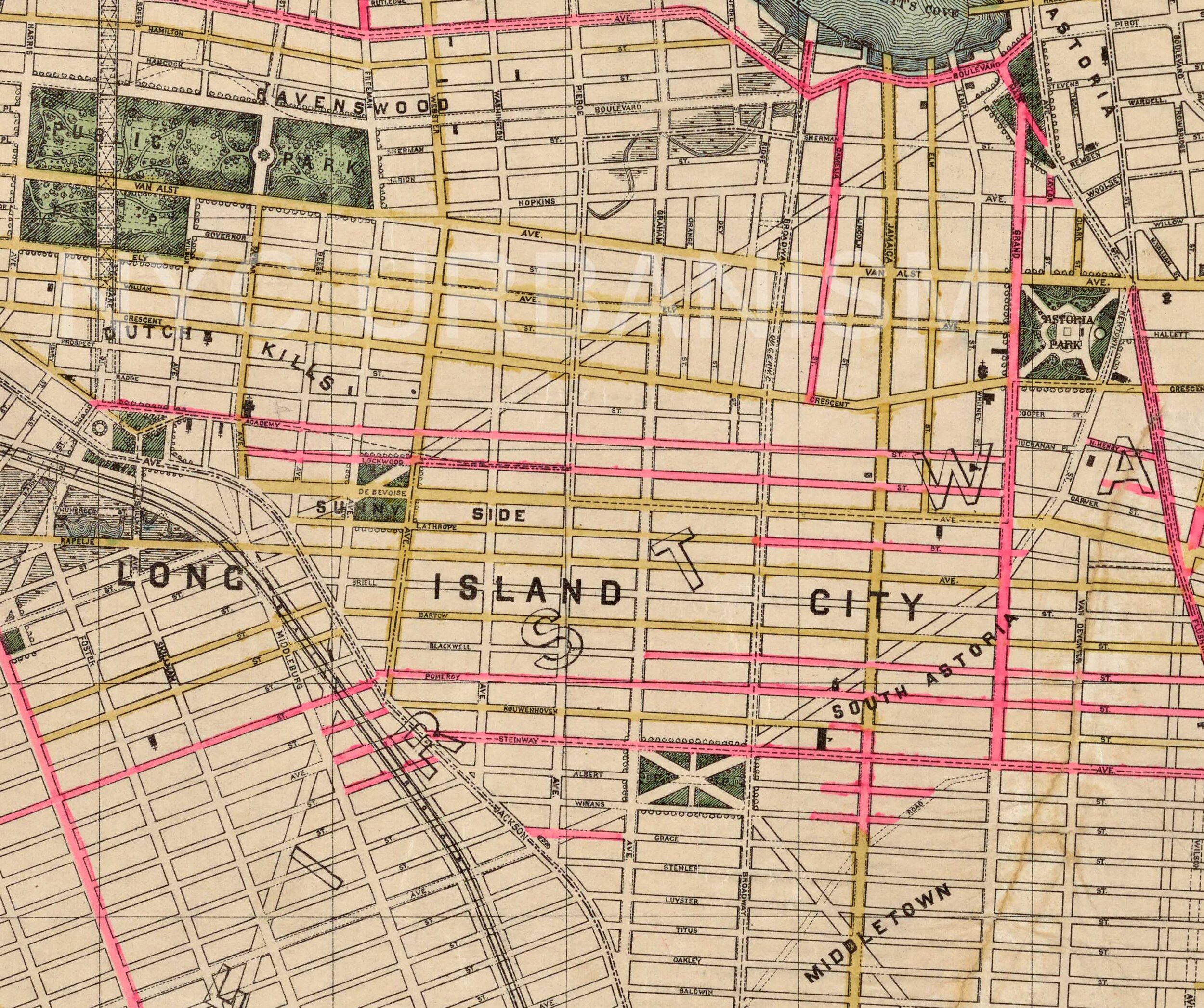Long Island City Street Map (1900)


Long Island City Street Map (1900)
This post-consolidation map shows Long Island City streets and their legal status. Streets colored yellow were in the process of acquiring by the city. Two years earlier Queens had become a Borough of New York City, consolidating the many independent towns and villages of Queens, seen in the second map. Private streets were acquired to connect the Borough, but each village had its own street naming system, with most of the streets having alphabetical, worded names. In the following decade, the city would institute a massive street numbering grid system for the Borough, with east-west avenues increasing in number from north to south and north-south streets from west to east. Some neighborhoods like Flushing, with many diagonal streets, would keep their old names and the Rockaway Peninsula would get its own numbering system. Other exemptions include Ridgewood, who would share its grid and name system with its #Brooklyn neighbor, Bushwick.
In connecting two separate street systems, there would frequently be one or more short streets between two numbered streets. To give those streets a name, the rule was as follows: "If a single street should fall between 20th and 21st Streets, it would be called 20th Place; if two streets should be left in this way, the first would be designated as 20th Place, and the second as 20th Lane. A similar system is used in the case of avenues, or highways running east and west; but in this instance, in order to avoid confusion, the terms, "Road" and "Drive" are employed instead of "Place" and "Lane." In some localities short curved streets have also been projected, as in Forest Hills, Douglaston, etc.; these are called "Terraces" or "Crescents."" (The American City, February 1928)
Custom sizes available upon request. Second image is a crop showing image quality.
